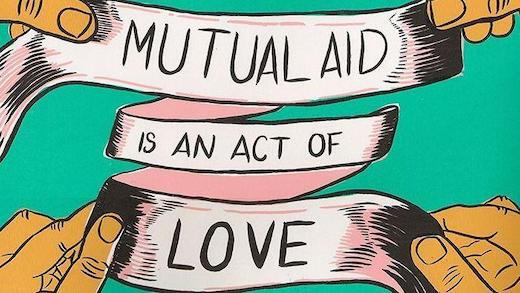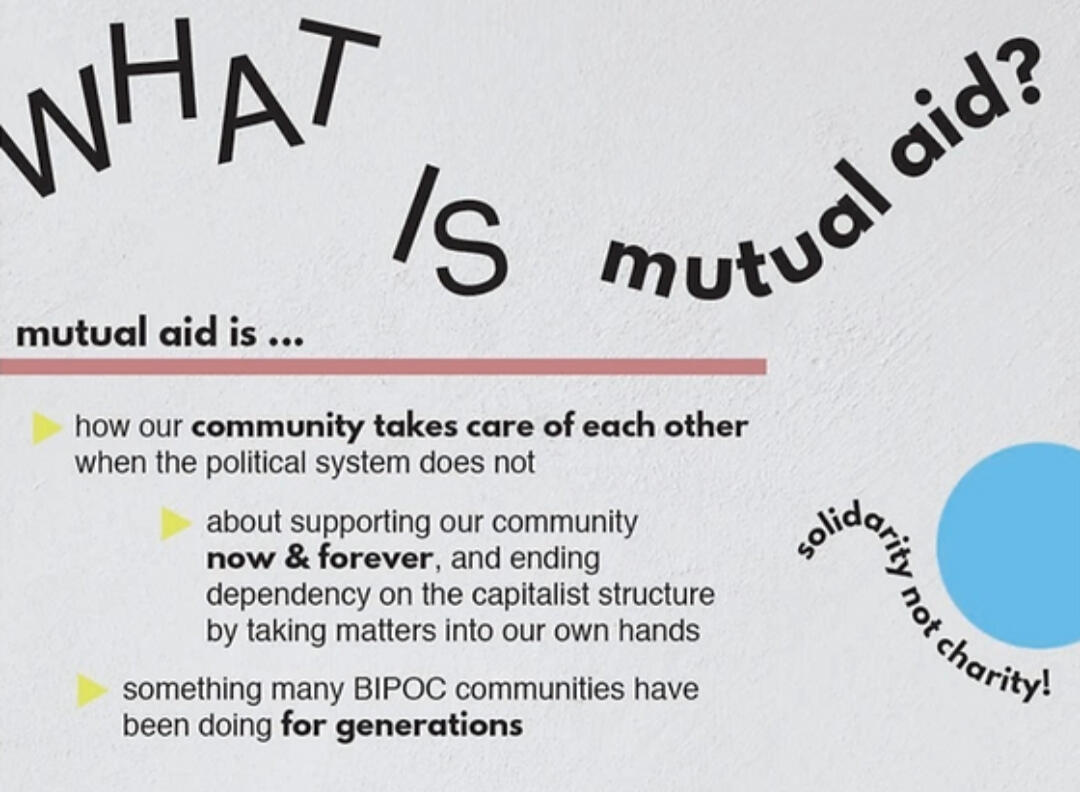Get Connected With Local Resources

My Mission
The goal of Chronic Crowdfund is to help people with chronic health issues and unmet financial needs get their mutual aid requests fulfilled by sharing their posts and raising awareness of the barriers to accessing financial stability that disabled people face daily. I also hope to help people with mutual aid needs help themselves by providing mutual aid resources specifically tailored to their needs and demographics.
My account @ChronicCrwdfnd shares crowdfund posts by marginalized community members, posts resources, shares crowdfunding tips, and directs people towards mutual aid accounts and resources that serve their location and demographics. On this website I discuss: what mutual aid is, how to organize mutual aid, how to boost your own crowdfunds, resources specific to marginalized communities, and food bank/community fridge information, tips on how to help others with limited resources, covid mutual aid, mutual aid literature, links to my programs, and how to contact me.
Why Do We Need Disability Specific Mutual Aid?
There are two parts to this answer. First of all, many disabled people are homeless or live in severe poverty. Every year over a million [mostly disabled & chronically ill] people go into medical bankruptcy. There is no country on earth that has an SSDI/SSI program that gives checks above the poverty line- thus many disabled people must live below the poverty line or they will loose the only income [SSI/SSDI] they have. There are many other barriers to financial mobility, such as the fact that companies can legally pay disabled workers sub-minimum wages. This is not unique to the United States, either. Other factors, such as denial of accessibility accommodations and discrimination/ableism, make it difficult to get or keep a job. During the COVID-19 pandemic many high risk workers were forced to decide between their income and their life basically, and many quit their jobs and now rely on mutual aid.
Now that I have briefly established the factors that contribute to poverty in the disabled community, I want to discuss barriers to accessing mutual aid we face as well. Mutual aid does not discriminate, but people do. Inaccessibility can make it difficult or impossible to access online or in person mutual aid resources. Additionally, there are many programs for specific marginalized communities but the disabled community is often forgotten and left out. When asking for mutual aid on social media, many disabled crowdfunders get harassed for posting, and told they are just lazy, greedy, and should simply "get a job." Disabled people, especially during the pandemic, also have needs that often take extra work to meet [such as delivering groceries and medications], and many are unwilling to put in the work to protect our valuable disabled community members during this pandemic. Due to all of these factors, disabled people desperately need mutual aid and also struggle to access it.
What I've Donated
Diapers men's small/medium 4x [20 to a pack]
pediatric wheelchair
tilt in space manual wheelchair
4 wheel walker
upright walker
7x box of central line dressings
21x rapid covid tests
3x mail in covid tests
Pulse Oximiter
Sterile Dressings
Compression gloves
Women's small adaptive period underwear
Deep heat pain relief
Folding cane
2x kid's socks packs
1x children's toy
XL cold pack
2x pillows
2x folding cane
Paper masks x4 boxes
N95 masks x3 boxes [150]
Compression stockings
Hinged knee braces x2
Queen sheet sets x3
Epsom salts x3
XL shorts & sweatpants
XXL long sleeve shirts x2
XXL short sleeve shirt
XXL sweater
2 months of medication

WHAT I CURRENTLY NEED DONATED
Diapers
Diabetes supplies
Baby clothes and supplies
Second hand mobility equipment
Masks & covid tests
School supplies
Money to cover shipping for a large aid package
Find me on twitter or use the form at the bottom of the page to contact me if you can donate anything
Disability Mutual Aid Pages [Twitter]
@spoonieuni mutual aid for bipoc disabled and chronically ill people
@MutualAidBetes diabetes mutual aid, including supplies
@AtRiskMutualAid mutual aid for high risk people
@AutisticPOC mutual aid for autistic people of color [has a fund you can apply for]
@ChronicCommFund disability mutual aid boost page
@ChronicCrwdfnd sharing resources and boosting mutual aid posts for disabled people
@vondutchhandbag individual sharing lots of mutual aid posts
@Sophanas individual sharing lots of mutual aid posts
@madmutualaid mutual aid by and for mentally ill and disabled BIPOC people
@transhoodoofund trans BIPOC disability mutual aid page
@OpticalBlocPDX Portland based free optical care
@Witches4Access Portland based accessible activism and mutual aid
@testblocSEA Seattle based rapid test [covid] mutual aid group
@testblocpdx Portland based rapid test [covid] mutual aid group
@HollerHealth free health clinic, prioritizes marginalized groups
@PurifierBlocPDX Portland free air purifiers
@maskblocpdx Portland free masks
@PDX_Care mental health care Portland

